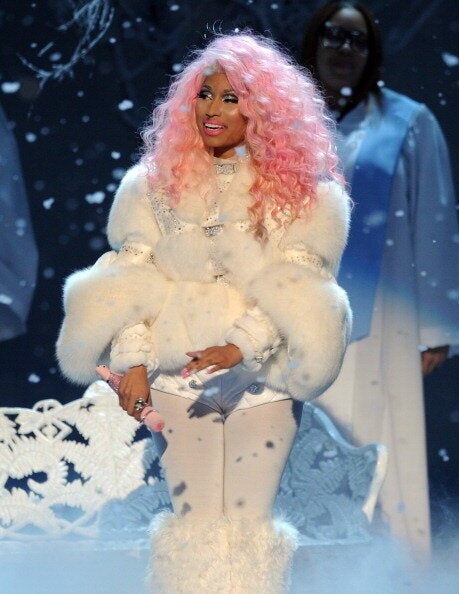
In July of 2000, British Petroleum (BP) launched "Beyond Petroleum" as part of a $200-million public relations campaign to position itself as an environmentally-friendly company. Three years later, cigarette manufacturer Phillip Morris tried to evade its anything-but-altruistic reputation by changing its name to Altria. Despite this brazen greenwashing and rebranding, rampant oil spills, climate change, and lung cancer continued to tell a different story.
Taking their cues from big oil and big tobacco, in 2008 the Fur Council of Canada (FCC) launched their "Fur is Green" campaign in an attempt to divert attention from animal cruelty concerns -- which had been steadily driving down demand for decades -- while capitalizing on green consumerism. Pitching fur as "natural, renewable and sustainable", the campaign tried to convince Canadians that fur is not only environmentally benign, but actually beneficial. "You want to help nature?" FCC executive vice president Alan Herscovici told the National Postin 2008, "Ride your bike to work, put out your blue box, and buy a fur coat."
Those of us familiar with the fur industry found the irony of this new campaign laughable until we realized that people were actually buying it. Supportive press coverage popped up all across the country, fur-toting companies like Canada Goose started weaving the enviro message into their sales pitches, and a new generation of fur-wearers was born.
While nobody knows how big a role "Fur is Green" played in fur's trendy comeback, one thing is certain: The FCC pulled off a major coup. First, they managed to position themselves as a "council" of environmentalists, rather than the industry-funded lobby group they actually are. The self-described mission of the FCC is "to promote, defend and enhance the...interests of [its] members." The FCC weighing in on the environmental impacts of fur is like Phillip Morris (I mean, Altria) weighing in on the health impacts of cigarettes.
Despite this obvious conflict of interest and the preposterous notion that killing wildlife is an excellent way to "help nature," the "Fur is Green" campaign remains largely unchallenged. Why? Because there isn't that much to challenge, given that Canada's Competition Bureau doesn't restrict or qualify the use of terms like "green" or "environmentally friendly" -- terms even the U.S. Federal Trade Commission and International Standards Organization have deemed "too vague to be meaningful." Meanwhile, advertising standards committees in England, Denmark, Holland, Finland and Italy have ruled that advertising fur as environmentally friendly is "false and misleading".
Despite these international precedents, the FCC have continued freely promoting "Fur is Green" here in Canada -- a campaign centered on three misleading claims:
Fur is "Natural"
According to the FCC, fur is "natural" because it's "biodegradable.".They also claim that fur can be "passed down and used by two or even three generations," leaving out that the only way fur can be preserved is through tanning, a chemical process whose sole purpose is to prevent it from biodegrading. Tanning relies on a long list of toxic and carcinogenic chemicals, including formaldehyde and chromium, denaturing the fur's DNA to such an extreme that it becomes almost impossible to identify the species it came from.
The FCC also like to claim that fur is "natural" because trapped animals come from "nature," conveniently leaving out that 80% of the fur in Canada comes from fur factory farms. The most commonly farmed animals are mink, who have a natural territory of up to 2500 acres but are forced to spend their lives on fur farms confined to tiny wire cages with less floor space than two sheets of paper. Unable to run, hunt, hide or properly socialize, fur-farmed animals are fed a diet of slaughterhouse and fish farm waste and killed at just seven months of age by gassing or anal electrocution.
Good thing for the FCC that terms like "natural" are unrestricted in Canada.
Fur is "Renewable"
If our history with animals has taught us anything, it is that viewing them as "renewable resources" is the fastest route to their annihilation. Not only is the concept outdated, it's also inconsistent with the way we view our companion animals, each of whom is a unique, irreplaceable individual just like its wild counterparts.
Despite what the FCC would have you believe, commonly trapped animals are not chosen because they are "surplus," weak, or diseased, but only because they are one of the 10 or 12 species (out of an estimated 140,000 in Canada) with soft, thick fur. While the FCC pitches its members as "practicing conservationists," the reality is that the fur industry kills as many animals as they can sell. Because traps are indiscriminate, millions of "non-target" animals are also caught and killed, including dogs, cats, and numerous endangered species. (Apparently these animals are also considered "renewable.")
Anyone familiar with the fur trade knows it has a long track record of helping turn so-called "renewable" species into threatened, endangered and/or extinct ones. These species include the North American Sea Mink, now extinct as a result of relentless trapping, and the Newfoundland Marten, of which only 300-600 remain. Closer to the border, Canadian trappers are being credited with driving the U.S. wolverine population close to extinction, thanks in large part to the fact that wolverine pelts fetch an average of $400 per pelt.
It would seem that the FCC considers animals "renewable" as long as at least two of their species remain.
Fur is "Sustainable"
Given the fur industry's history of helping push animals to (or over) the brink of extinction, the FCC's use of the term "sustainable" is perhaps the most dubious. But the mass slaughter of wildlife isn't the only thing unsustainable about the fur industry, especially given that 80% of the fur in Canada comes from factory farming, one of the most resource intensive and polluting industries on the planet.
As a groundbreaking 2011 report on mink farming revealed, farmed fur outscores other textiles (including cotton and polyester) anywhere from 2-28 times for land use, climate change, ozone layer depletion, soil and water pollution, and toxic emissions. The report found that for each kilogram of mink fur, 110kg of carbon dioxide is produced, enough to to drive a car from Toronto to St. John, NB.
The report also concluded that each kilogram of fur was responsible for more than 200 kilograms of manure. In Nova Scotia, home to the majority of Canada's fur farms, manure runoff from mink operations has been identified by the David Suzuki Foundation as a major threat to soil and water quality, posing serious risks for fish, birds, farmed and wild animals, humans, and the environment. A 2009 government assessment found 37 of 38 fur farms allowed runoff to flow into wood, swamps, marshes or wet pasture, while a separate water quality survey identified mink farms as "the most likely source of contamination" for 10 of the province's lakes.
Meanwhile, Paula Lishman, fur designer and president of the FCC, continues to describe fur as "not polluting."
Fur is NOT Green
As we have seen, unrestricted terms like "green," "environmentally-friendly," "natural," "biodegradable," "renewable" and "sustainable" mean almost nothing when used by lobby groups like the FCC, whose purpose is to line the wallets of the fur industry, even if that means greenwashing in the dirtiest sense of the term. Despite the FCC's desperate and misleading attempts at rebranding a cruel and dying industry, the truth remains: The only thing "green" about fur is profit.
